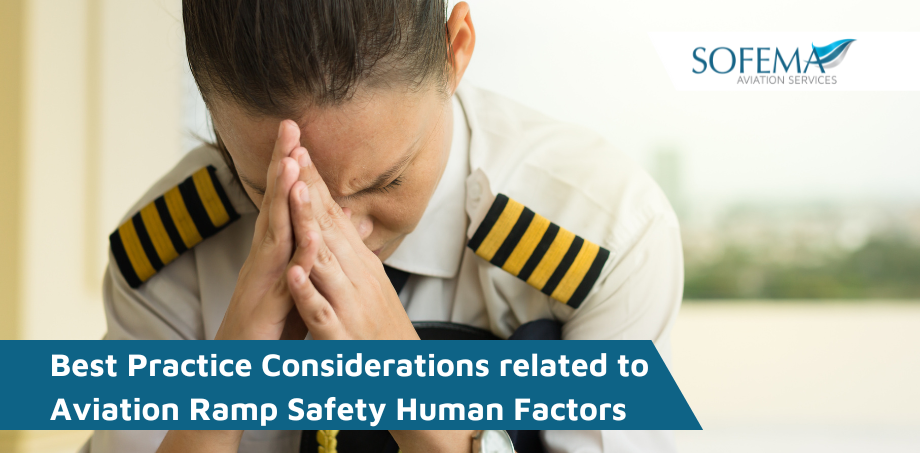Sofema Aviation Services (SAS) www.sassofia.com looks at the best mechanisms to control the Human Factors (HF) exposure.
Communication Best Practice – Detailed information must be passed before, during, and after any task, especially across the handover of shifts.
- When messages are complex, they should be written down.
- Organisations should encourage full use of logbooks, worksheets, checklists, etc.
- Verbal messages should be kept short, with the most critical elements emphasized at the beginning and repeated at the end.
- Assumptions should be avoided, and;
- opportunities for asking questions both given and taken.
Complacency Best Practice – It is important, when conducting simple, routine, and habitual tasks, and when fatigued, to maintain an adequate, or optimum, level of stress through different stimulation.
- Always expect to find a fault! Following written instructions, and adhering to procedures that increase vigilance, such as inspection routines, can provide suitable stimulus.
- It is important to avoid: working from memory; assuming that something is ok when you haven’t checked it; and, signing off work that you are unsure has been completed.
- Teamwork and mutual cross-checking will provide adequate stimulus when fatigued.
Lack of Knowledge Best Practice – All employees should undertake continuing professional development:
- Experienced workers are encouraged to share their knowledge with colleagues.
- Ensure the latest knowledge on human error and performance.
- Ask for help.
- Checklists and publications should always be referred to and followed.
- Never make assumptions or work from memory.
- Distraction Best Practices – To reduce errors from distraction it is best to complete a task before moving on.
- If the task cannot be completed without hurrying, then we can prominently mark (or, “lock-off”) the incomplete work as a reminder to ourselves and anyone else who may complete the work.
- When returning to work, to commence at least three steps back
- have someone else double-check our work using a checklist if appropriate l.
- Create “safety zones”, “circles of safety” or “do not disturb areas” around workers engaged in critical tasks.
Team Work Best Practices – A clearly defined and maintained aim, or goal(s):
- Understand Roles & Responsibilities.
- Communication Methods, Limitations & Boundaries.
- Understand Emergency procedures.
- Debriefing arrangements.
- Opportunities for questions and clarification.
Note – A team’s effectiveness can also be improved through the selection of team members to reflect a broad range of experience and skill sets, and also through practice and rehearsal.
Fatigue Best Practices – Be Aware of the signs and symptoms of fatigue:
- Fatigue self-management sleep, diet, and exercise.
- Avoid critical and complex tasks.
- When fatigued always get someone else to check your work.
Lack of Resources Best Practices – Resources also include personnel, time, data, tools, skill, experience, and knowledge:
- Strive for forward planning.
- Acquire, store and locate resources.
- Properly Maintain Adequate Resources that are available.
Pressure Best Practices – Learning assertiveness skills will allow a worker to say ‘No’, ‘Stop!’:
- Communicate concerns with colleagues, customers, and the Company.
- When deadlines are critical, ensure extra resources and help is available.
- Avoid Making Assumptions.
Lack of Assertiveness Best Practice – Learn Assertiveness techniques:
- Focus on keeping calm, being rational,
- Use specific examples rather than generalizations,
- Invite feedback.
- Direct criticisms of actions and consequences, not people.
Stress Best Practices – Learn to recognise signs of stress (acute or chronic):
- Learn breathing and relaxation techniques.
- Set up channels of communication to discuss the issue and help to rationalise perceptions.
- Sleep, diet, and exercise are all important factors
- Company stress reduction programmes.
Norms Best Practices – Rules and procedures should be designed and tested:
- Rules to be enforced
- Workers encouraged to feedback issues
- Develop Assertiveness
- Do it right & avoid peer pressure
Lack of Awareness Best Practices – Build Experience:
- Develop our foresight
- Ask others to check our work and challenge our decisions
- Maintain Vigilance
- Introduce workplace procedures
- Use checklists
Next Steps
Follow this link to our Library to find & Download related documents for Free.
Sofema Aviation Service (www.sassofia.com) provides Classroom & Webinar Training covering Ramp Safety & Ramp Human Factors Training – Please see the following course: Aircraft Ramp Safety and Ramp Human Factors Initial Training – 2 Days or email Team@sassofia.com if you have any questions or need additional details.
Tags:
Aircraft Ramp, aviation, aviation safety, Aviation Training, EASA, HF, human factor, Human Factors, Ramp Human Factors, Ramp Safety, Safety




